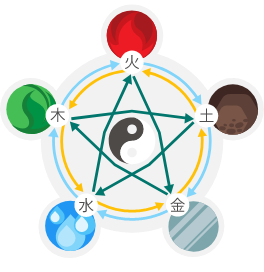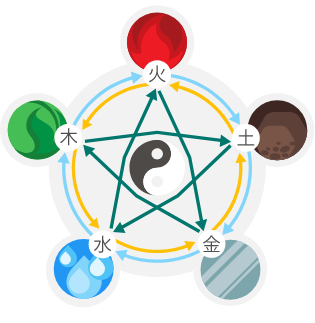You have a Distinct Element Style from all the rest!
Find out how this advantage can work for you. Take my quiz to find out more!
Take the quiz nowHouse Plants Can Purify the Air
We will be spending more time indoors over the next few months, so providing a healthy indoor environment for everyone is high on the list!
Not only do house plants provide oxygen/carbon monoxide exchange to cleanse the air, some varieties can detoxify! How cool is that?
As a feng shui Consultant, I often suggest live plants to counter the effects of EMF’s (Electro-Magnetic Fields) from computers and wireless technology. I recommend many of these live plants listed below as they could be an appropriate cure and/or appropriate to enhancement a specific area. But there is much more to these plants!
Looking deep into the ugliness of the world, our lives are so polluted with environmental issues.
If we splurge on new anything for the house, we are bringing in more contaminants and more issues. Many carpets, draperies and other textiles have been treated with fill in the blank to keep these items free from bugs and mildew. Any carpentry work such as new cupboards, baseboards and decking have other chemicals; treatment with glues and synthetics to make them strong. And, all of this is off-gassing in our homes! Yikes!
We deserve to have our homes safe, with clean air to breathe and little or no toxic fumes.
While we ‘make choices every day’ as to what we bring home with us, plants are the best choice to tackle some of these hidden possible carcinogens brought into our homes.
These plants are easy to find and easy to grow:
Snake Plant– One of the easiest to grow. It has long, fleshy leaves with a little variegation in colour. You can ignore this plant for a month. It thrives with little water and can live in a darkened stairwell. Not the prettiest plant I’ve seen, but was tested as the ‘most effective’ in removing toluene from the air.
Aloe Vera– A famous household plant, used to treat minor cuts and sunburns burns. It has long succulent leaves and requires a sunny window to thrive. This lovely plant neutralizes the effects of formaldehyde in your space.
Peace Lily– Has soft tapered leaves and blooms regularly indoors. It requires only diffused or filtered light and will grow quite bushy sitting on an end table or a buffet. The delicate white oval flowers are long lasting. One would never guess this plant can clear the air of benzene, trichloroethylene and more.
Boston Fern– Especially nice in a hanging basket, this fern is easy to grow with a little humidity in the air and bright, filtered light. They can get enormous in size and tend to drop small leaflets on a regular basis. All ferns in general, are found to be most efficient for removing formaldehyde in an area.
Dracaena– A hardy tropical plant with woody stems sprouting sprigs of tough, green spikes. They are easy-care indoors in North American and prefer a dryer well-drained soil. There are many variations of these to choose from, some score high on clearing xylene from the air, another trichloroethylene.
Weeping Fig– A tree-sized house plant, with solid oval leaves, can survive indoors with shade or sunny exposure. Hardy when left to acclimate in an area, but don’t try to move this plant or the leaves will fall off. It will recover, but the guilt you have won’t. (When I moved mine: I put a stick in the plant pot, when the plant faces the direction of the sun. When I got to my new place, I oriented the fig tree the same way, and was able to keep the leaves intact.)
A fig tree can remove a unique variety of pollutants from the air: octane, terpene and xylene.
Spider Plant– A lively, dramatic choice for a bright kitchen, sun room or bathroom. They like a little moisture in the air, and grow well in a hanging basket. It will reproduce by sending little ‘baby spiders’ out in a long shoot, which you can cut off and make another plant, or just leave them be. The lovely grassy foliage is a favorite of cats, as they will play with the grass and pounce on the ‘babies’. A spider plant can cleanse many toxins, but best known for decreasing carbon monoxide and nitrogen dioxide levels, ethylbenzene and formaldehyde.
Who would have thought a simple oxygen-carbon monoxide exchange to purify our air could be so complex? When asked about possible ‘over toxicity’ of a plant; the answer was, ’the plant will adapt’!
We are bombarded by all kinds of information about emissions, food calories, building supplies and many that do not properly disclose the dangers imposed on us. The list of possible toxins that are waiting to poison our homes is overwhelming! With all this information available to us now, who wouldn’t want a house full of plants?
I’ve always preached to be safe: play safe and play smart.
One of the smartest things to do; is purchase a few house plants to help keep the air cleaner in our homes.
– Kathryn
I read an expanded article about this very topic, by Jesse Vernon Trail*, I just had to forward this information to you, my readers, to keep your homes and family safe. *Jesse Vernon Trail, Author. Guest article in Alive.com

Are you a Wood, a Fire, an Earth, a Metal or a Water element?
 TAKE THE QUIZ NOW
TAKE THE QUIZ NOW

Find out how this advantage can work for you. Take my quiz to find out more!
Take the quiz now
Leave a Reply